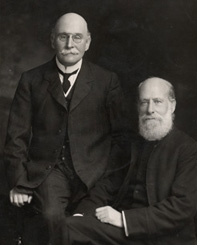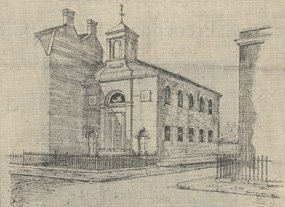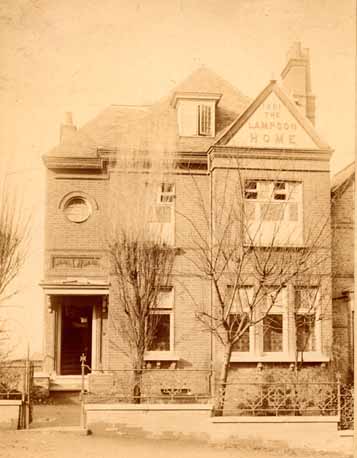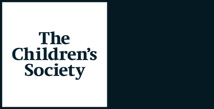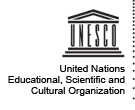A Brief History of the Waifs and Strays' SocietyThis is a brief description of how the Waifs and Strays' Society was founded, and the link the with The Children's Society as it is today.
The foundersThe Waifs and Strays' Society was founded in 1881 by Edward de Montjoie Rudolf (1852 -1933). He was a civil servant. He also worked with his brother, Robert, as Sunday School teacher, in the parish of St Anne's, South Lambeth, London. This was a poor area with many needy children. The brothers began running the Sunday School in 1871 when they were quite young. Edward was 19, and Robert was 15. Edward was the Superintendent of the Sunday School. The reason for starting the Society
One day in 1881 two brothers who attended the Sunday School suddenly stopped coming. They were later found in a neglected state begging for food from workers at a local gasworks. Their father had died, leaving their mother with seven children to look after. She was unable to support the boys, but she did not want the family to go into a Workhouse. The boys had to fend for themselves. The Rudolf brothers tried to find a Church of England Home for the boys to go into, but they could not find one that would take them without requiring a payment. The boys were eventually admitted free of payment into a Home which was not allied to any particular Church. Edward Rudolf decided that there was a need for Church of England Homes for destitute children that didn't necessarily require payment. He thought it was important that children in these circumstances could receive the teachings of the Church of England. How the Society was establishedEdward wrote letters to many people, mostly members of the clergy, whom he thought might be interested in helping establish the children's homes. On 31 March 1881 an inaugural meeting took place. It was attended by Edward and Robert Rudolf, members of the clergy and other interested people. They set up a committee, and began making plans for fundraising for the newly formed organisation. The Archbishop of Canterbury, Dr Archibald Tait, was asked to become the President of the Society. He formally agreed to this on 24 August 1881. From this date on the Society became an officially recognised organisation of the Church of England. It was known as the Church of England Central Home for Waifs and Strays'.
The first homes and childrenIn December 1881 a house in Friern Road, East Dulwich in South London was rented with the intention of it becoming the first home. In January 1882 a house in Clapton, London was rented and set up as the first boy's home. The first children were received into the Society's care on 14 February 1882. DevelopmentThe Society grew very rapidly. By 1890, just 9 years after the inaugural meeting, the Society was running 35 homes. It was also arranging foster care for children. In October 1890 there were nearly 1600 children in its care. By 1905 it had 93 homes throughout England and Wales. There was a total of 3410 children in the Society's care. 2406 of these lived in Society's homes, 259 in affiliated homes, and 745 were fostered. Changes of name and roleIn 1893 the Society took on the official name of the 'Church of England Incorporated Society for Providing Homes for Waifs and Strays'. In 1946 it was renamed the 'Church of England Children's Society'. From 1982 it adopted the informal title of 'The Children's Society', as it is known today. In the 1970's The Children's Society refocused its work with children and young people. It moved away from its work with children's homes, adoption and fostering. The Society no longer runs any children's homes. Instead, it works with children and young people in need in local communities, with Local Authorities and in the youth justice sector. For further information about the current work of The Children's Society, see The Children's Society w eb site. |
